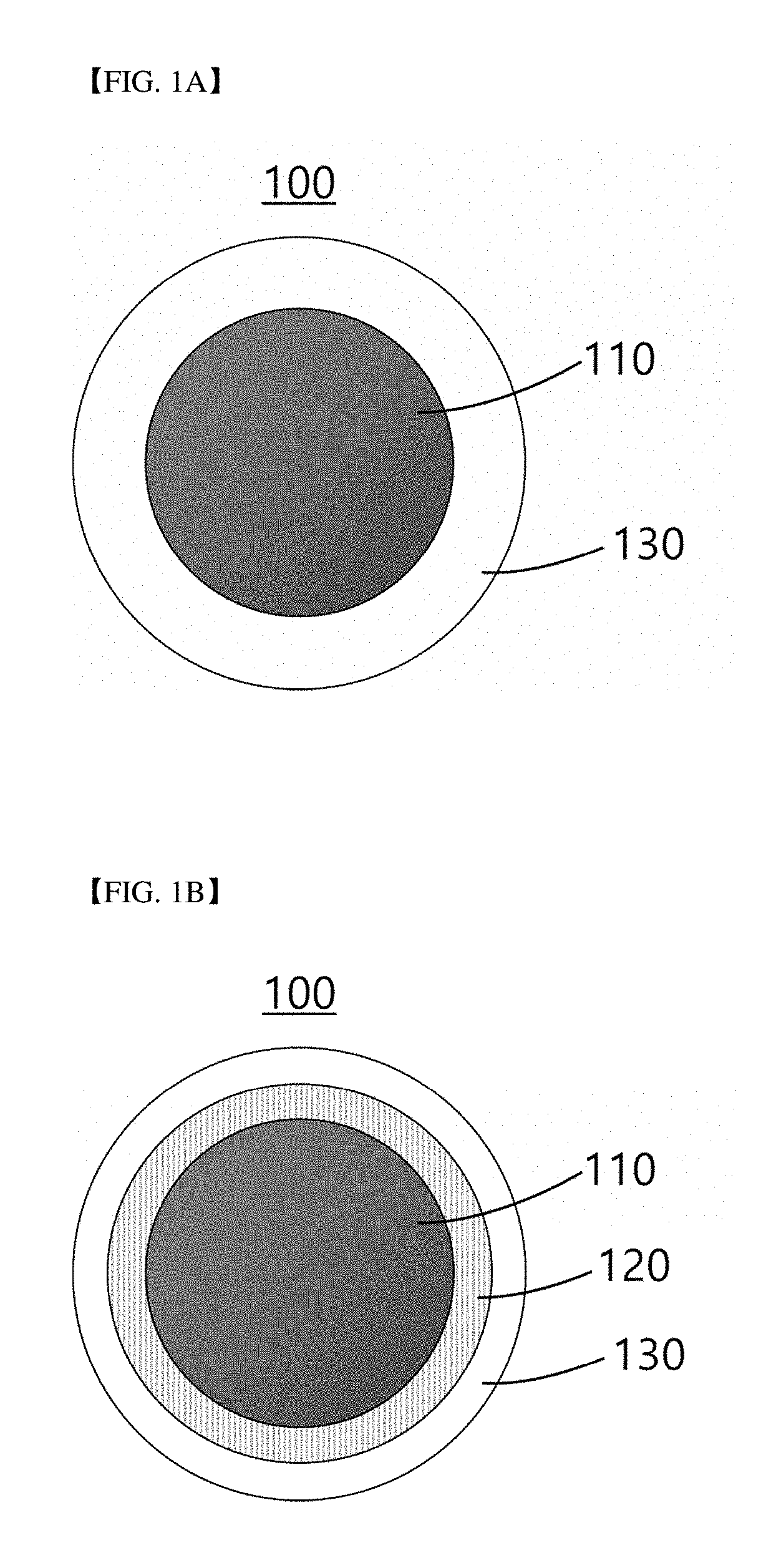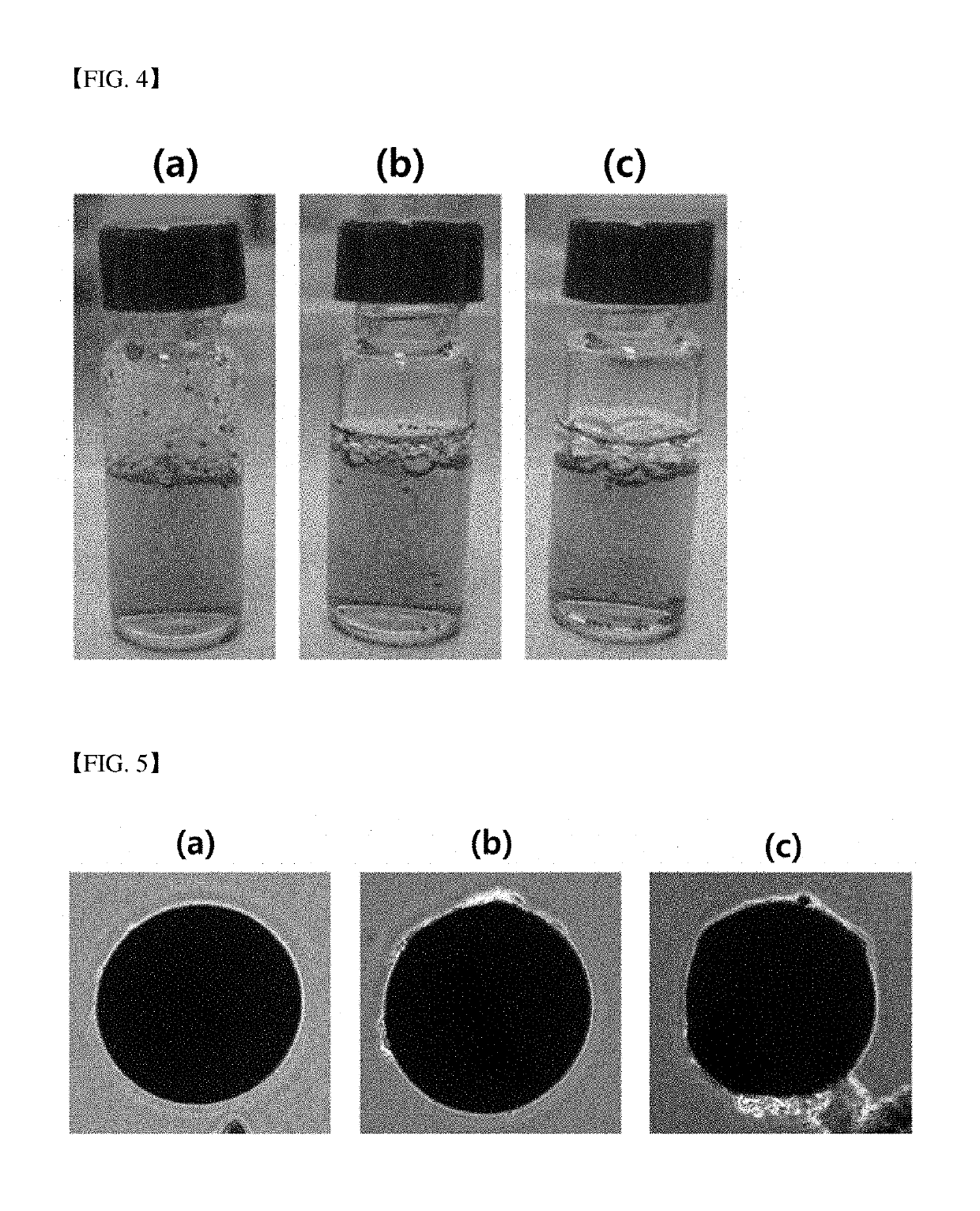Microbeads for cell culture and method of monitoring cell culture using the same
- Summary
- Abstract
- Description
- Claims
- Application Information
AI Technical Summary
Benefits of technology
Problems solved by technology
Method used
Image
Examples
example 2
ring of Microbeads for Cell Culture (Diameter: 200 μm)
[0150]Spherical microbeads surface-modified with methoxyaminopropylsilane were manufactured in the same manner as in Example 1, except that polyethylene cores having a diameter of about 180 μm were used to prepare microbeads having a diameter of about 200 μm.
example 3
ure Using Microbeads with Low Specific Gravity (Diameter: 500 μm) of Example 1 (for Two Hours)
[0151]340 Surface-modified microbeads with a diameter of 500 μm of Example 1 and 3.5×102 mesodermal stem cells were mixed in a plastic tube. Temperature was maintained at 37° C. such that the cells were bound to the surfaces of the microbeads. Cell culture was performed for two hours while shaking every 10 minutes over a period of two hours such that the microbeads and the cells were dispersed.
[0152]FIG. 4 is a view illustrating culture period-dependent behavior of microbeads in a culture medium according to an example of the present invention.
[0153]Referring to (a) to (c) of FIG. 4, as a result of the cell culture according to Example 3, the number of sunken microbeads tended to increase as cell culture time increased (from (a) to (c)).
example 4
ure Using Microbeads with Low Specific Gravity (Diameter: 500 μm) of Example 1 (for Five Days)
[0154]Cell culture was carried out using the microbeads in the same manner as in Example 3, except that a cell culture time was extended to five days.
[0155]FIG. 5 is a view illustrating an adhesion degree of cells to microbeads depending upon position thereof in a culture medium according to an example of the present invention.
[0156]Referring to (a) to (c) of FIG. 5, after culturing cells in a plastic tube for five days according to Example 4, microbeads distributed in (a) an upper layer (a surface layer). (b) an middle layer, and (c) a lower layer (bottom layer) of a culture medium were fractionized and adhesion degrees of cells on surfaces of the microbeads were observed by means of an inverted microscope. As a result, it was confirmed that the number of cells attached to each of the microbeads increased in proportion to sinking degrees of the microbeads.
[0157]FIG. 6 illustrates an MTT as...
PUM
 Login to View More
Login to View More Abstract
Description
Claims
Application Information
 Login to View More
Login to View More - R&D
- Intellectual Property
- Life Sciences
- Materials
- Tech Scout
- Unparalleled Data Quality
- Higher Quality Content
- 60% Fewer Hallucinations
Browse by: Latest US Patents, China's latest patents, Technical Efficacy Thesaurus, Application Domain, Technology Topic, Popular Technical Reports.
© 2025 PatSnap. All rights reserved.Legal|Privacy policy|Modern Slavery Act Transparency Statement|Sitemap|About US| Contact US: help@patsnap.com



